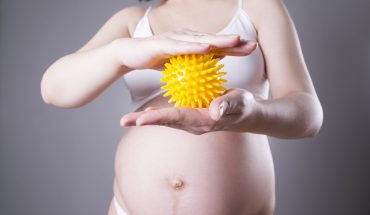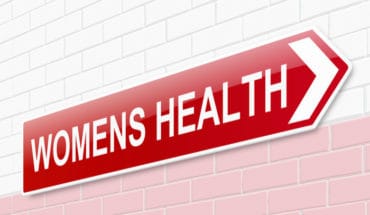An urgent report from the WHO Regional Office for Europe reveals that condom use among sexually active adolescents has declined significantly since 2014, with rates of unprotected sex worryingly high. This is putting young people at significant risk of sexually transmitted infections and unplanned pregnancies. The new data were published as part of the multi-part Health Behaviour in School-aged Children (HBSC) study, which surveyed over 242,000 15-year-olds across 42 countries and regions in the period 2014 to 2022.
Far-reaching consequences of unprotected sex
Overall, the report highlights that a substantial proportion of sexually active 15-year-olds are engaging in unprotected sexual intercourse, which WHO warns can have far-reaching consequences for young people, including unintended pregnancies, unsafe abortions, and an increased risk of contracting sexually transmitted infections (STIs). The data indicate that the high prevalence of unprotected sex indicates significant gaps in age-appropriate comprehensive sexuality education, including sexual health education, and access to contraceptive methods.
Worrying decline in condom use
Compared to 2014 levels, the new data show a significant decline in the number of adolescents reporting condom use during last sexual intercourse. From the data, it is clear that the decrease in condom use is pervasive, spanning multiple countries and regions, with some experiencing more dramatic reductions than others.
The report underscores the urgent need for targeted interventions to address these concerning trends and promote safer sexual practices among young people within the wider context of equipping them with the foundation they need for optimal health and well-being.
“While the report’s findings are dismaying, they are not surprising,” noted Dr Hans Henri P Kluge, WHO Regional Director for Europe. “Age-appropriate comprehensive sexuality education remains neglected in many countries, and where it is available, it has increasingly come under attack in recent years on the false premise that it encourages sexual behaviour, when the truth is that equipping young persons with the right knowledge at the right time leads to optimal health outcomes linked to responsible behaviour and choices. We are reaping the bitter fruit of these reactionary efforts, with worse to come, unless governments, health authorities, the education sector and other essential stakeholders truly recognise the root causes of the current situation and take steps to rectify it. We need immediate and sustained action, underpinned by data and evidence, to halt this cascade of negative outcomes, including the likelihood of higher STI rates, increased healthcare costs, and – not least – disrupted education and career paths for young persons who do not receive the timely information and support they need.”
Key findings from the report:
- Decline in condom use: The proportion of sexually active adolescents who used a condom at last intercourse fell from 70% to 61% among boys and 63% to 57% among girls between 2014 and 2022.
- High rates of unprotected sex: Almost a third of adolescents (30%) reported using neither a condom nor the contraceptive pill at last intercourse, a figure that has barely changed since 2018.
- Socio-economic differences: Adolescents from low-affluence families were more likely to report not using a condom or the contraceptive pill at last sexual intercourse than their peers from more affluent families (33% compared with 25%).
- Contraceptive pill use: The report indicates that contraceptive pill use during last sexual intercourse has remained relatively stable between 2014 and 2022, with 26% of 15-year-olds reporting that they or their partners used the contraceptive pill at their last sexual intercourse.
Need for comprehensive sexuality education
The findings underscore the importance of providing comprehensive sexual health education and resources for young people. “As teenagers, having access to accurate information about sexual health is vital,” said Éabha, a 16-year-old from Ireland. “We need education that covers everything from consent to contraception, so we can make informed decisions and protect ourselves.”
“Comprehensive sexuality education is key to closing these gaps and empowering all young people to make informed decisions about sex at a particularly vulnerable moment in their lives, as they transition from adolescence to adulthood,” said Dr András Költő of the University of Galway, the lead author of the report. “But education must go beyond just providing information. Young people need safe spaces to discuss issues like consent, intimate relationships, gender identity and sexual orientation, and we – governments, health and education authorities, and civil society organisations – should help them develop crucial life skills including transparent, non-judgmental communication and decision-making.”
Roadmap for action, despite worrying trends
While the findings are sobering, they also offer a roadmap for the way ahead.
The report calls for sustainable investments in age-appropriate comprehensive sexuality education, youth-friendly sexual and reproductive health services, and enabling policies and environments that support adolescent health and rights.
“The findings of this report should serve as a catalyst for action. Adolescents deserve the knowledge and resources to make informed decisions about their sexual health. We have the evidence, the tools, and the strategies to improve adolescent sexual health outcomes. What we need, though, is the political will and the resources to make it happen,” said Dr Margreet de Looze of Utrecht University, one of the report’s co-authors.
Call to action for policymakers and educators
The WHO Regional Office for Europe calls upon policymakers, educators, and healthcare providers to prioritise adolescent sexual health by:
- Investing in comprehensive sexuality education: Implement and fund evidence-based sexuality education programs in schools that cover a wide range of topics, including contraception, STIs, consent, healthy relationships, gender equality, and LGBTQIA+ issues. In this, the International Technical Guidelines on Sexuality Education (ITGSE), produced by a consortium of United Nations agencies and partners, are key.
- Enhancing access to youth-friendly sexual health services: Ensure that adolescents everywhere have access to confidential, non-judgmental, and affordable sexual health services that meet their specific needs and preferences.
- Promoting open dialogue: Encourage open and honest conversations about sexual health within families, schools, and communities to reduce stigma and increase awareness.
- Training educators: Provide specialised training for teachers and healthcare providers to deliver effective and inclusive sex education. Such resources should be made available in both school and out-of-school settings.
- Conducting further research: Investigate the underlying reasons for the decline in condom use and the variations in sexual health behaviours across different populations to inform targeted interventions. This includes analysing messages and other content adolescents are exposed to across social media and online platforms, given their reach and impact all the more.
“Ultimately, what we are seeking to achieve for young persons is a solid foundation for life and love,” said Dr Kluge. “Sexual and reproductive health and rights, informed by the right knowledge at the right time along with the right health and well-being services at the right time, is critical. By empowering adolescents to make informed decisions about their sexual health, we ultimately safeguard and improve their overall well-being. This is what all parents and families should want for their children, everywhere.”
FULL REPORT AVAILABLE HERE
- Gut microbiome could delay onset of type 1 diabetes - 3rd April 2025
- The da Vinci 5 Robot Is Set To Transform Bariatric Care: - 31st March 2025
- Beyond money: the hidden drivers fuelling child food insecurity - 31st March 2025






